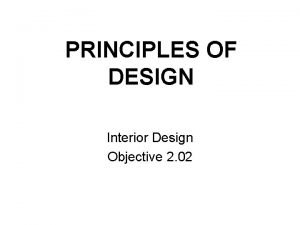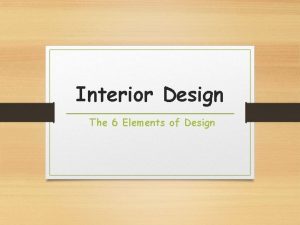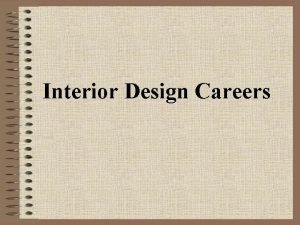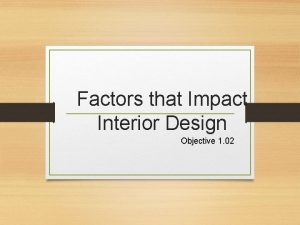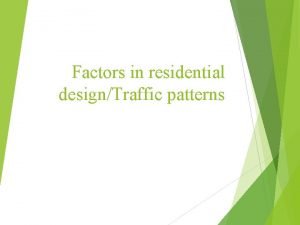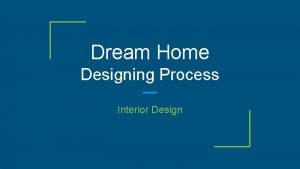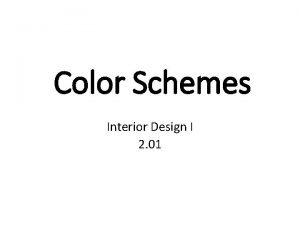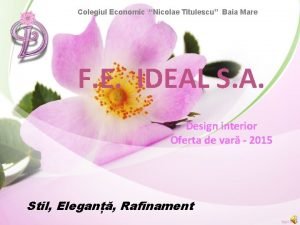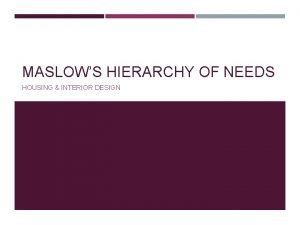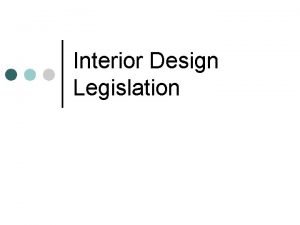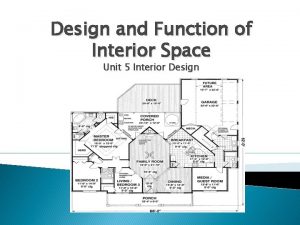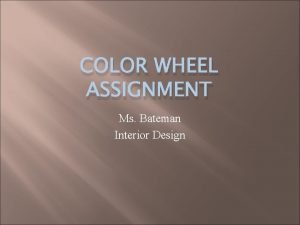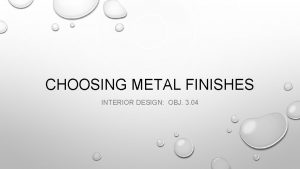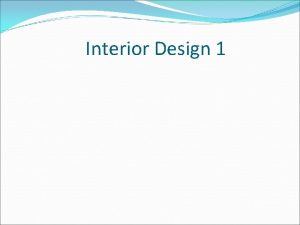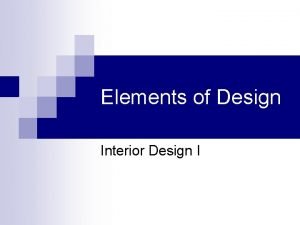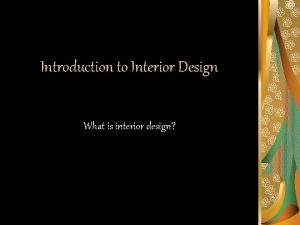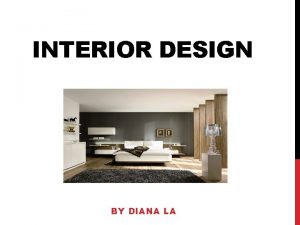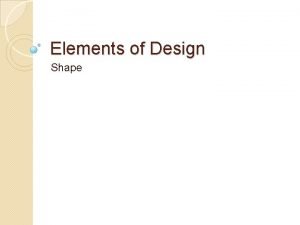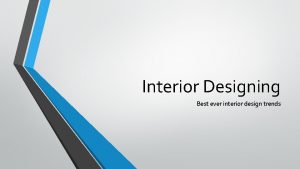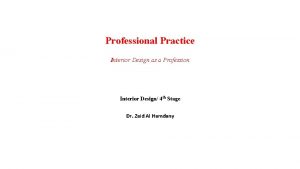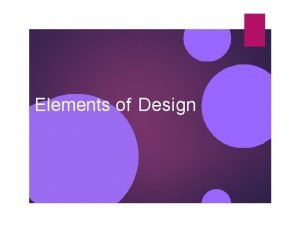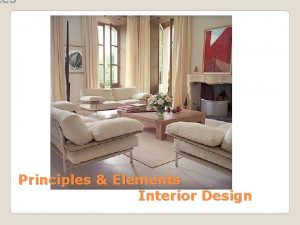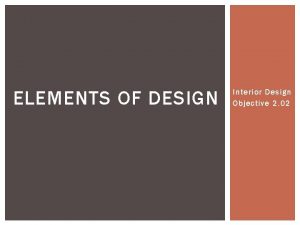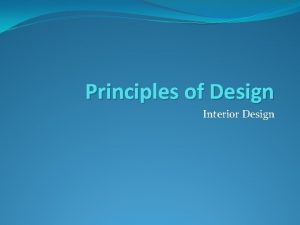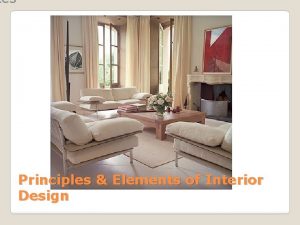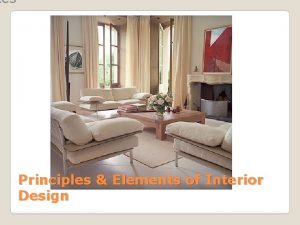Ch 10 Elements of Design Interior Design Design


















- Slides: 18

Ch. 10 Elements of Design Interior Design

Design Visual imagery- a type of nonverbal communication (language of sight) Design- the entire process used to develop a specific project

Design characteristics Function- how a design works Usefulness, convenience, organization Construction- materials and structure Fabrics, woods, metals How the materials are assembled Aesthetics- pleasing appearance or effect

Elements of design Line Form Space Mass Texture

Line Most basic element of design Created when two dots are connected Form edges or outlines of objects and areas

Types of Lines Horizontal- parallel to the ground Relaxation, calmness, restfulness Vertical- perpendicular to the ground Height, strength, dignity, stability Diagonal- angle between horizontal and vertical Activity Curved- levels part of a circle Organization, eternity, uniformity

Using lines Applying different types of lines to specific decorating situations can result in different effects Repeating straight or curved lines can create a strong, intense statement To create a more relaxed look, combine various types of lines

Form Physical shape of objects Outlines the edges of a three-dimensional objects Contains volume and mass Height, width, and depth

Types of form Realistic form- looks very much like the real thing Abstract form- rearranges or stylizes a recognizable object Geometric form- uses squares, rectangles, circles, and other geometric figures to create form

Using form Form follows function Related forms are more agreeable than unrelated forms A gradual change in form smoothly directs the eyes

Space Refers The area around a table Refers The to the area around a form to the area inside a form area inside a room When discussing space, two closely related factors need to be considered The size of the space Its arrangement

Size of the space Size of interior space is often defined by its height, length, and width Affects who will use the space and how it will be used Example A bedroom that is 10 by 12 feet is probably too small for two teenagers who each need a bed, desk, and chair

Arrangement of the space First evaluate the space and decide what design effect you want to achieve To open and expand spaces, you can expand window area, use mirrors, or remove walls To create the feeling of cozy quarters, the space can be divided into separate areas

Mass The amount of pattern or objects in a space Refers to how crowded or empty a space appears Can have high or low mass

Types of mass High mass Refers to a space that is usually crowded A lot of pattern or lines are found May reflect a full, crowded, or cluttered feeling Low mass Refers to a space that is simple and sparse It is the opposite of high mass Only the essential furnishings are used in a low-mass design Communicates clean and airy feelings

Texture Refers to the way a surface feels or appears to feel Two kinds of texture Tactile Visual

Types of texture Tactile how the surface feels to the touch You can see and feel Bumpy, smooth, rough, soft, smooth, grainy, hard Visual See, but cannot feel Found in scenic wallpaper or fabric patterns as well as pictures Ex: Photograph of a stone fireplace

Using texture You can use specific textures to communicate different feelings in a room Rough surfaces can create a more casual feeling Smooth surfaces can communicate an elegant feeling
 Elements of interior design ppt
Elements of interior design ppt Differentiate structural design from decorative design
Differentiate structural design from decorative design Abstract interior design
Abstract interior design Transition principle of design
Transition principle of design Introduction to interior design
Introduction to interior design What are the objectives of interior design
What are the objectives of interior design Interior design goals
Interior design goals Jacobean style furniture
Jacobean style furniture Human factors in interior design
Human factors in interior design Interior design ppt
Interior design ppt Traffic flow floor plan
Traffic flow floor plan Home design checklist template
Home design checklist template Tetrad color scheme interior design
Tetrad color scheme interior design Colegiul national nicolae titulescu baia mare
Colegiul national nicolae titulescu baia mare Design hierarchy of needs
Design hierarchy of needs Title act vs practice act
Title act vs practice act Guest circulation pattern
Guest circulation pattern Color wheel assignment
Color wheel assignment Interior design metal finishes
Interior design metal finishes



